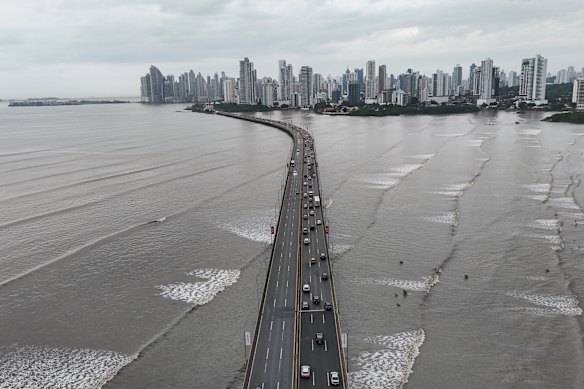By Katrina Miller
When one of the largest earthquakes ever recorded struck off the coast of the Kamchatka Peninsula in eastern Russia on Wednesday, tsunami warning centres around the Pacific leapt into action.
They quickly issued advisories for the potential of colossal ocean waves that are often generated by big earthquakes. But later in the morning, the centres began to cancel those warnings as the big waves failed to appear. What happened?
According to Diego Melgar, a geophysicist at the University of Oregon, part of the reason the tsunamis were weaker than anticipated may have to do with the size of the earthquake.
“There’s big,” he said. “And then there’s really, really, really big.”
The most recent event had an estimated magnitude of 8.7 or 8.8 on the scale scientists use to measure the strength of earthquakes, Melgar said.
By contrast, catastrophic tsunamis in the past, including a wave that struck Indonesia in 2004 and another that hit Japan in 2011, were about a magnitude 9.
That might sound comparable to Wednesday’s quake, Melgar said, but it was significantly bigger.
That’s because the earthquake scale is logarithmic: a magnitude 9 event possesses about 10 times as much energy as a magnitude 8.7 event, and about three times as much energy as a magnitude 8.8 event.
The earthquake on Wednesday occurred along a subduction zone, where one of Earth’s tectonic plates slides under another. This can cause the seafloor to move up and down, creating a wave that propagates across the ocean.

Cars at a standstill in Panama City following the tsunami warning.Credit: AP
According to Melgar, current models suggest that Wednesday’s earthquake occurred across a stretch of seafloor that was hundreds of miles long. The longer the quake, the more energetic the tsunami could be, he said.
A larger earthquake typically generates a larger wave. But the wave size depends on smaller details of the quake, such as the depth of the motion at different parts along the line where the two tectonic plates meet.
“Not all earthquakes are created equal,” Melgar said.
“We’re still untangling the details. It’s going to take weeks to months of research to figure out exactly what happened.”
More likely than not, this earthquake just wasn’t big enough to create a catastrophic wave.
“Don’t get me wrong, it’s still huge,” he said. “But those in 2004 and 2011 were behemoths.”
Tsunamis are different from typical ocean waves, which are shallower ripples created by the wind. Tsunamis, by contrast, are generated deeper down and are more like the waves produced if you submerge your hand in water and move it up and down.
Wednesday’s event was a bit poetic, Melgar said: an earthquake struck in the same place in 1952. That triggered a 3.6m high wave that reached the coast of Hawaii with little warning. This time, the network of warning centres in the Pacific Ocean meant the world was more prepared.
“It’s kind of a better-safe-than-sorry situation,” Melgar said. “Warnings went out. This is a big success.”
This article originally appeared in The New York Times.
Get a note directly from our foreign correspondents on what’s making headlines around the world. Sign up for our weekly What in the World newsletter.